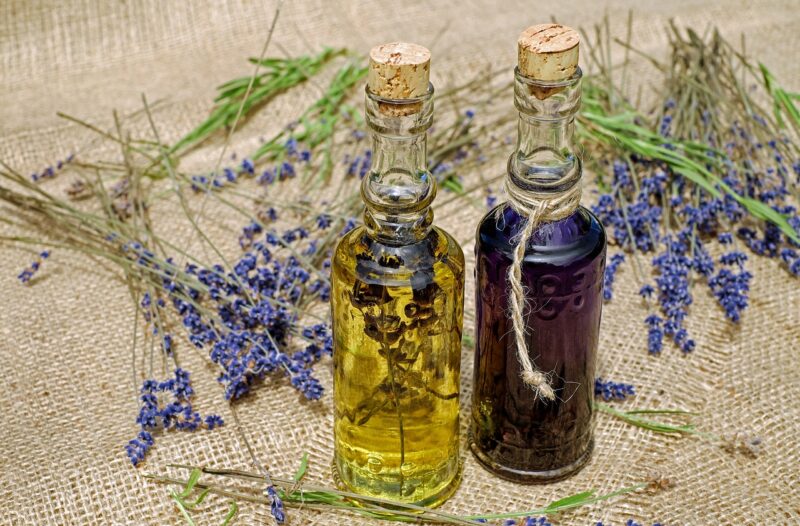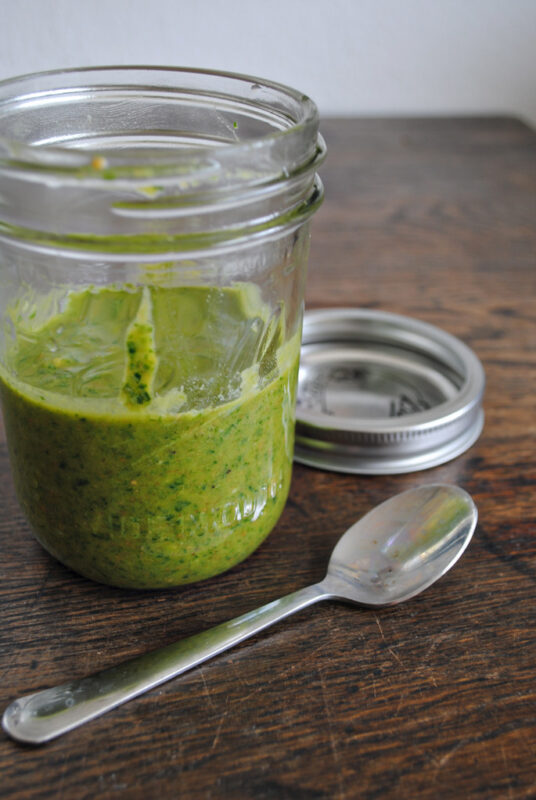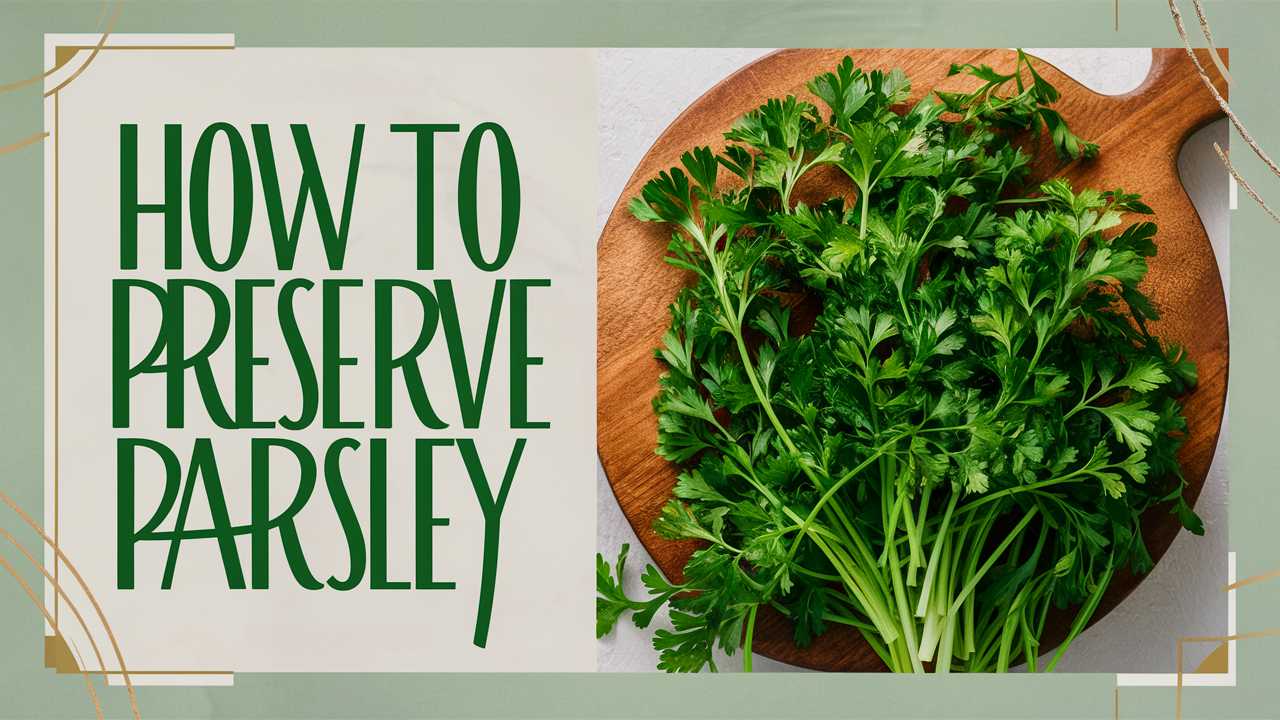Parsley is more than just a garnish; it’s a powerhouse herb full of flavor and nutritional benefits. Yet, many find that their bunches of fresh parsley often wilt away before they can fully utilize them. In this guide, we’ll explore various methods to preserve parsley, ensuring you have this vibrant herb on hand for all your culinary adventures. Sit back, gather a handful of fresh parsley, and let’s embark on this flavorful journey together.
The Allure of Parsley: Understanding its Importance

Parsley boasts a remarkable profile, providing flavor as well as essential nutrients. This herb is rich in vitamins A, C, and K, and is known for its antioxidant properties. Beyond its health benefits, it enhances dishes with vibrant color and freshness—adding brightness to everything from soups to salads. Recognizing parsley’s role in the kitchen is the first step in appreciating how preserving it can elevate your meals.
Consider the kitchen of a seasoned cook, bustling and filled with the scents of sautéed garlic and freshly chopped herbs. That flash of green from a handful of parsley, sprinkled at the last moment, transforms an ordinary dish into an extraordinary one. Through this guide, we aim to keep your parsley as fresh as possible, enabling you to achieve that same vibrant touch in your own culinary creations.
Harvesting Fresh Parsley: The First Step

Harvesting parsley properly is crucial for ensuring its longevity. When you pick parsley, always choose the outer leaves, allowing the inner growth to flourish. Ideally, harvest in the early morning or late afternoon when the plant is comfortable and full of moisture. This practice not only ensures the strongest flavor but also promotes the health of the plant.
For home gardeners, cultivate parsley in well-draining soil, giving it access to ample sunlight but shielding it from extreme heat. Freshness is key. If you’re purchasing parsley from a market, select bunches with bright green leaves and no signs of yellowing or wilting. The more vibrant the herb, the easier it will be to preserve and enjoy later.
Freezing Parsley: A Simple Yet Effective Method

Freezing is one of the most popular and effective methods for preserving parsley. This approach locks in flavor and freshness, making it ideal for later use. The process is simple and can be tailored to fit various preferences.
Start by washing the parsley thoroughly—remove any dirt and grit, and then pat it dry with a clean kitchen towel. Once dry, you have a couple of options. For a quick freeze, chop the parsley coarsely, spread it on a baking sheet, and freeze until solid. This step prevents the pieces from clumping together in storage. Transfer the frozen bits to an airtight container or a resealable freezer bag, removing as much air as possible. In this form, parsley can last up to six months.
An alternative method is to freeze parsley in ice cube trays. Chop the parsley and fill each compartment with the herb, then add water or stock to cover. This results in convenient, portioned cubes ready to drop into soups or sauces. Not only does this method aid preservation, it adds a touch of vibrant flavor to your dishes.
Drying Parsley: A Flavor-Intensifying Technique

Drying parsley is another fantastic option that extends its shelf life while intensifying its flavor. This method is particularly nostalgic to many home cooks, evoking memories of summer herb gardens.
To begin, gather a bouquet of parsley and remove any damaged or discolored leaves. Bundle the stems together and tie with twine or a rubber band. Hang the bunch upside down in a warm, dry place away from direct sunlight. A kitchen or pantry works perfectly, as long as it’s well-ventilated. Leave the parsley to dry for about two weeks, checking periodically until it crumbles easily between your fingers.
Once fully dried, crumble the leaves and store them in an airtight container in a cool, dark place. Not only does this method preserve your parsley, but it also allows you to tap into the concentrated flavor during winter months when fresh herbs may be scarce.
Oil Infusion: Creating Parsley-Infused Goodness

Another delightful way to preserve parsley is through oil infusion. This technique not only preserves the herb but also enriches the oil with flavor, creating a wonderful addition to your pantry.
Start with clean, dry parsley, giving it a rough chop. Then, in a saucepan, heat a neutral oil—such as olive or canola—over low heat. Add your chopped parsley and let it gently simmer for about 10 to 15 minutes, ensuring the oil doesn’t bubble or fry the herb. Allow the mixture to cool, then strain it through a fine mesh sieve or a cheesecloth into a clean bottle. Add a pinch of salt for flavor, and store the infused oil in the refrigerator for up to a month.
This method is multi-functional: drizzle it over salads, use it as a base for salad dressings, or even as a finishing oil for grilled meats. The depth of flavor from your parsley-infused oil will become a favorite staple in your kitchen.
Vinegar Preservation: A Tangy Twist

Preserving parsley in vinegar is an excellent way to harness its essence while introducing a tangy twist. This method can create a delightful base for dressings or marinades, enhancing both flavor and versatility.
To start, rinse your parsley and chop it roughly. Place the chopped herb into a clean jar, ensuring you pack it down a bit. Next, pour your choice of vinegar—white wine vinegar, apple cider vinegar, or even balsamic—over the parsley until it is completely submerged. Seal the jar tightly and let it sit in a cool, dark place for about 2 to 3 weeks.
Once infused, the vinegar can be strained or left in as desired. When the infusion period is complete, you will have a vibrant, parsley-flavored vinegar that adds a punch to your salads or marinades. This creative method not only preserves parsley but also transforms it into a culinary asset.
Creating Parsley Paste: A Unique Approach

If you’re looking for an inventive way to preserve parsley for immediate use, creating a parsley paste is an ideal option. This method is particularly beneficial for those who regularly cook with the herb and want it handy for flavoring dishes.
Begin with a food processor. Add your washed parsley, a sprinkle of salt, and a light drizzle of olive oil. Blend until it forms a smooth paste. This mixture can be stored in a glass container in the refrigerator for up to a week. If you’d prefer, you can freeze it in ice cube trays for longer preservation.
The paste is incredibly versatile—stir it into soups, mix it with grains, or use it as a seasoning for roasted vegetables. A parsley paste provides a concentrated flavor boost, making it an essential addition to your culinary repertoire.
Experimenting: Blending with Other Herbs
Creating unique blends can enhance the flavor profile of your preserved parsley. Combining parsley with other herbs, like cilantro or basil, can yield refreshing results. When blending, consider the characteristics of each herb; for instance, pairing parsley with a milder herb will allow its flavor to shine without being overpowered.
Chop your selected herbs together before preserving. This approach combines flavors, creating versatile mixtures for different dishes. A Mediterranean blend with parsley, basil, and oregano, for example, would be perfect for Italian recipes, while parsley mixed with mint and cilantro could brighten up Middle Eastern dishes.
Troubleshooting: Common Issues and Solutions
Even the most seasoned cooks encounter challenges when preserving herbs. Wilting, browning, or loss of flavor can be frustrating. When freezing, ensure that the herbs are completely dry before storing; excess moisture can lead to freezer burn. If drying, avoid humid environments that can hinder the process.
Consider labeling your containers with preservation dates. This way, you’ll know when to use your parsley before optimal freshness diminishes. Understand that texture changes are natural; while fresh parsley is crisp and vibrant, preserved parsley will often be softer or have a concentrated flavor.
The Culinary Uses of Preserved Parsley
Once you’ve successfully preserved your parsley, the possibilities are virtually endless. One of the most gratifying aspects of preservation is that it allows you to infuse your dishes with a taste of summer, even in the depths of winter.
Frozen parsley can be directly added to soups, stocks, and sauces—no need to thaw first. It’s also a great addition to omelets, stews, and pasta dishes. Dried parsley lends itself well to rubs for meats or fish, enhances marinades, and can be sprinkled over pizzas for a fresh touch.
Parsley oil adds a luxurious finish to grilled vegetables or meats. The parsley-infused vinegar is ideal for creating zesty dressings or marinades that can elevate a simple salad into something exceptional. The versatility of preserved parsley allows it to continue contributing to your meals long after you’ve harvested it.
The Broader Perspective: Sustainability and Beyond
Preserving parsley connects us to a larger movement toward sustainability and food waste reduction. As more people embrace home gardening and the idea of seasonal eating, preserving our harvest becomes invaluable. Each herb preserved is a step away from relying on store-bought options, reducing plastic waste and environmental impact.
By preserving parsley, you cultivate not just a connection to the herb itself but also to nature and the cycles of growth. Incorporating preservation methods into our cooking practices reflects a respect for food and its origins—a lesson that resonates in both personal kitchens and the broader culinary landscape.
Conclusion: A Journey Worth Taking
Through this guide, we’ve navigated various approaches to preserving parsley, each method highlighting its potential as both a flavorful ingredient and a staple in your kitchen. Whether you choose freezing, drying, or infusion, each technique offers a unique way to enjoy the herb year-round.





